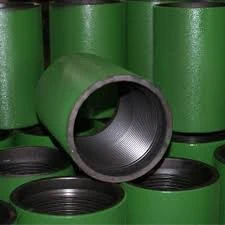- Afrikaans
- Albanian
- Amharic
- Arabic
- Armenian
- Azerbaijani
- Basque
- Belarusian
- Bengali
- Bosnian
- Bulgarian
- Catalan
- Cebuano
- Corsican
- Croatian
- Czech
- Danish
- Dutch
- English
- Esperanto
- Estonian
- Finnish
- French
- Frisian
- Galician
- Georgian
- German
- Greek
- Gujarati
- Haitian Creole
- hausa
- hawaiian
- Hebrew
- Hindi
- Miao
- Hungarian
- Icelandic
- igbo
- Indonesian
- irish
- Italian
- Japanese
- Javanese
- Kannada
- kazakh
- Khmer
- Rwandese
- Korean
- Kurdish
- Kyrgyz
- Lao
- Latin
- Latvian
- Lithuanian
- Luxembourgish
- Macedonian
- Malgashi
- Malay
- Malayalam
- Maltese
- Maori
- Marathi
- Mongolian
- Myanmar
- Nepali
- Norwegian
- Norwegian
- Occitan
- Pashto
- Persian
- Polish
- Portuguese
- Punjabi
- Romanian
- Russian
- Samoan
- Scottish Gaelic
- Serbian
- Sesotho
- Shona
- Sindhi
- Sinhala
- Slovak
- Slovenian
- Somali
- Spanish
- Sundanese
- Swahili
- Swedish
- Tagalog
- Tajik
- Tamil
- Tatar
- Telugu
- Thai
- Turkish
- Turkmen
- Ukrainian
- Urdu
- Uighur
- Uzbek
- Vietnamese
- Welsh
- Bantu
- Yiddish
- Yoruba
- Zulu
Understanding Casing Threads and Couplings in Oil and Gas Applications
Understanding Casing Threads and Couplings in Oil and Gas Industry
Casing threads and couplings play a vital role in the oil and gas industry, serving as essential components in the construction of boreholes for exploration and production activities. The casing is a series of pipes installed in a drilled well to provide structural integrity and prevent the collapse of the wellbore, while threads and couplings act as connectors that join these sections of casing together.
The Importance of Casing in Drilling
When drilling a well, particularly in harsh environments like offshore platforms or deep well applications, it is crucial to ensure that the well remains stable and safe. Casing provides this security by preventing the walls of the wellbore from caving in, allowing for safe extraction of hydrocarbons. Additionally, casing is instrumental in isolating different underground formations, which helps control the pressure and prevent the migration of fluids between different pressure zones.
Different types of casing are used depending on the application, including surface casing, intermediate casing, production casing, and liner casing. Surface casing is the first layer installed, providing stability and protecting groundwater resources. Intermediate and production casings serve deeper levels and help manage the well's pressure profile.
Casing Threads A Critical Connection
Casing threads refer to the specially designed grooves cut into the ends of each casing pipe. These threads allow for the connection of one casing segment to another and are engineered to withstand the mechanical stresses encountered during drilling and the subsequent production phases. Precision in threading is crucial, as even minor deviations can lead to leaks or failures in the casing.
Different thread types exist, including buttress, tapered, and straight threads. Each type has specific applications and advantages based on the drilling conditions and the nature of the well. For instance, buttress threads are known for their resistance to tensile and compressive loading, making them ideal for high-pressure wells.
casing threads and couplings

Couplings The Link That Joins
Couplings are short sections of pipe that connect two casing lengths. They are often threaded on both ends and serve as an intermediary link that maintains the overall structural integrity of the casing assembly. The choice of coupling design is determined by factors such as the type of casing, the specific threads used, and the operational conditions.
Couplings also come in various types, including welded, pin-and-box, and integral designs. Each type has its advantages—welded couplings offer high strength and are less prone to leaks, while pin-and-box couplings allow for easier installation and removal during maintenance or repairs.
Standards and Regulations
Given the critical importance of casing threads and couplings, several industry standards and regulations guide their design and manufacturing. Organizations such as the American Petroleum Institute (API) have established specifications to ensure that these components meet safety and performance criteria. Compliance with these standards is essential for preventing failures that can lead to environmental disasters or loss of life.
Conclusion
In conclusion, casing threads and couplings are fundamental components in the oil and gas industry that ensure the safety and efficiency of drilling operations. Their design and construction must be carried out with precision and adherence to strict industry standards, as they bear the weight of not only the casing structure but also the environmental responsibility of the extraction process. As technology continues to evolve, advancements in materials and engineering practices will likely lead to even more reliable and efficient casing solutions in the future, further enhancing the ability to safely harness the world’s energy resources.
-
Tubing Pup Joints: Essential Components for Oil and Gas OperationsNewsJul.10,2025
-
Pup Joints: Essential Components for Reliable Drilling OperationsNewsJul.10,2025
-
Pipe Couplings: Connecting Your World EfficientlyNewsJul.10,2025
-
Mastering Oilfield Operations with Quality Tubing and CasingNewsJul.10,2025
-
High-Quality Casing Couplings for Every NeedNewsJul.10,2025
-
Boost Your Drilling Efficiency with Premium Crossover Tools & Seating NipplesNewsJul.10,2025







